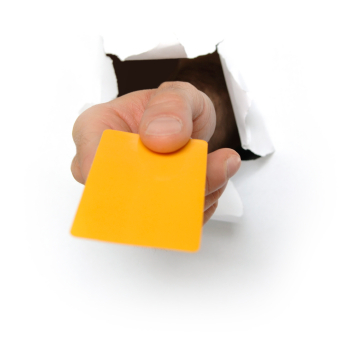Part II: Organic Search Engine Optimization
for blogs and websites
This is the second in a three part series of basic steps for bloggers who want to gain greater organic search exposure. No technical skill required. (Part I Here)
This post covers
- Categories
- Tags
- Headings
1. Categories
This is one of the times when I have to say: “Do what I say, not what I do.” If someone had told me when I first started blogging that Categories are the #1 way to keep people on your blog for a longer time period—a search robot measurement—my Categories would look different today. As it is, my blog Categories are overgrown and in desperate need of pruning…kind of like my out of control tropical garden during the rainy season—which it is right now.
In my opinion, Categories are THE strategic activity that bloggers need to pay attention to for the sake of their readers, and their content. Nothing is worse than an orphan post in a lonely Category—neglected, overlooked, and disrespected—except maybe a menu of Categories that exceeds the human attention span (I’ve seen them) or that inaccurately categorizes posts.
Defined: Categories in WordPress websites are another way to help search engines to identify content theme(s), and perhaps more importantly, organize your content for readers.
Readers looking for similar content might click on a Category listed below the post title, next to the byline, or explore new Categories displayed in a sidebar widget. Having a good stash of content under each Category will increase the time that a visitor STAYS ON YOUR SITE—data that search robots collect and are said to factor into the “relevancy” and “authority” algorithms of a blog/web site.
How to strategically manage Categories
One way to think about categories is to think of them as file folders. They are the top-level folder, the Redweld in legal speak—the main folder that is the name or number of the matter that you are handling and which holds sub-folders that contain types of documents pertinent to the matter. So, for example, within a Redweld named Case Admin there will be subfolders containing correspondence, time keeping, bills, and etc.
While it may be tempting to create lots of Categories (seriously, how many matters can YOU handle at one time), or even ignore them (believe it or not some bloggers do) the best approach is to think through the subject matter you will be blogging about and create a few big buckets. Best done in advance of launching your blog, if you have the luxury—if you’re just starting out.
People will disagree with me, but I think you should have only between five and ten Categories. You can load them up with sub-categories, on the fly, as needed, but better yet is to use Tags for the minutia. The bottom line is that an unfocused blog is more difficult for search engines to index and to pull readers deeper into your content archives, which will reduce your site’s bounce rate and improve its authority.
Steps to take.
Choose your Category names very carefully. Make them broad enough that they can be used time and time again on the blog.
Practical Pointer: Before you choose or add a Category, do a public search to see what comes up. If it fits the general idea, use it. If not, rethink it.
Categories should be obvious and they should match the tone of your blog content, meaning that if your content is snarky, straightforward, formal, casual, creative, etc., your Categories should be styled likewise—always keeping in mind the words that people might use to find your content. Caution: Don’t get too creative or it will not index well. If you have an established blog, check the site stats for strings people have searched to arrive at your most popular content. Consider creating a Category that uses one or more of those terms. If you already have it, use it more often.
Other things to do with Categories.
If you add a Category widget to your sidebar or footer, and you most definitely should, you can title the widget anything you’d like. Instead of Categories you might name it Topics, Issues, or Interests. Depending on the tone of your blog you could even call it something unique like “My Rants” or “More Opinion.” The title of your widget does not impact search results. I call mine “Discover Topics.”
Assuming everything I’ve said to this point is correct, Categories help search engines. In fact, blog audits I’ve completed for clients show that more often than not the most trafficked posts are from URLs that include a Category. Therefore you might include them in your permalink structure and you should if your Categories tell a strong niche story. Today, search robots actually do dig for categories as they are typically useful for simply defining the content.
The good news is that you can rename existing Categories and it won’t disturb the associated posts, UNLESS you use your categories in your permalink. If you use Categories in your permalink structure renaming them will break established inbound or onsite links.
2. Tags
Tags are different than Categories and they do not have sub-folders. They are Tags. From an SEO standpoint they function like meta data keywords and may be used by robots that crawl your site to index your content.
Think of tags as items in the subfolders of your Redweld. Tags might include proper names, companies, formal places, or topics, i.e, the 4th Circuit Court of Appeals, Steve Jobs, MIAMI HEAT, and etc. Anything specific to that post that you can add as a Tag will help both readers and search engines to organize the content of your post, page or archives in a more granular manner.
If your WordPress Theme gives you the option to add custom meta data keywords to the post, you can and should mirror the post Tags. Yoast SEO is a good plugin that also let’s you get granular with meta data and such.
You can have hundreds of Tags and you don’t need to reuse them, but you can and it will help move readers through your content.
3. Heading Tags to assist SEO
Although not as important to search optimization as it once was—and some will argue it is not at all important—using Heading tags may assist search robots and will most definitely assist your readers as they scan to consume the gist of your content. According to searchenginejournal.com, the H1 is not only a direct ranking factor (considering keyword usage), but also an indirect ranking factor by assisting in user engagement. If you make it easy for readers to skim your content, they may spend a little more time on your page, decreasing bounce rates. And may return again and again to your content, having found it easy to consume. Having lots of traffic gives your site or post popular and relevant status, a data point that search engines use.
People consume so much information every day on the web and most admit to being skimmers. Headings help skimmers get to the information they want quickly. So, take a few extra steps and add Heading Tags to your content.
Where search is concerned, the keywords in your heading tags denote values. H1 is a greater value than H6. So, if you do you head tags, you can also use keywords wisely in those headings. Of course, you don’t want to disrupt the flow for the reader by stuffing key words into headings, but if it flows, go with the flow.
How they work.
Headings are found in the Formatting tool of the WYSIWYG editor—that tool bar in your admin screen that sits above your content box and below your title. Open the Kitchen Sink—the last button on the right side—and your Formatting menu will be on the far left side of the second row of buttons.
The actual formatting of the Heading Styles will be unique to the CSS (Custom Style Sheet) of your theme—theme referring to the layout design of the WordPress skin you’ve chosen, not the content theme of a post.
Highlight the text you want to Format, and then select Heading 1, Heading 2, or Heading 3, and so forth.
Adding a Heading creates a tag in the HTML code. What the robots see is H1, H2, H3. These HTML “tags” prompt robots to regard this content as priority. (Go ahead and toggle to HTML mode in your editor to see the tags in action!)
Similar to adding BOLD or ITALIC to text you want to emphasize to call your readers’ attention, Heading Tags assign a priority to bits of text in the post, for example, Heading 1 top priority, Heading 2, important, Heading 3, less important, and so forth.
While it may seem like a small matter, breaking your post into parts is an effective way of organizing content for readers—see also the inverted triangle method that we discussed in Easy SEO for WordPress Part I—and prioritizing it for search robots. So use Headings.
So, that’s it for Part II. Next up is:
- Links
- Relevant Posts
- Image Tags
- Ping Services or Trackbacks
- Google Site Maps
Please drop a note in the comments if you have questions or insights to add to this post! Thanks!





